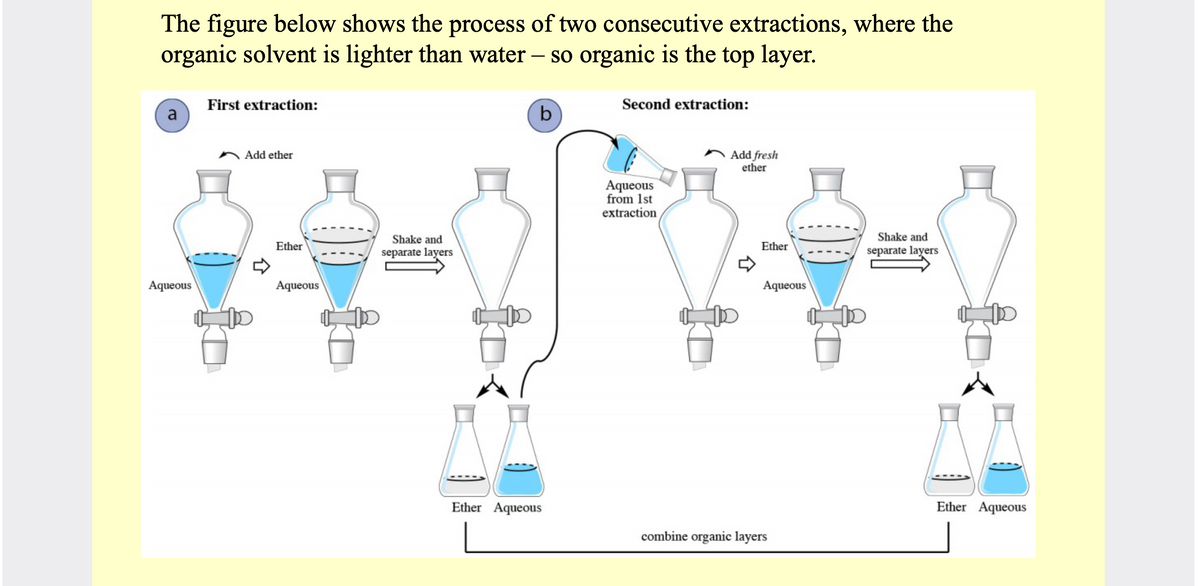raw a sequence like on slides 4 and 6 to show how to do the separations described below. Case 1: You added water to a reaction done in chloroform and poured this into a sep funnel. You want to extract the water two more times with chloroform, then wash the combined chloroform layers with NaCl, and collect the organic in an Erlenmeyer flask. Case 2: To a reaction done in ligroin, you add 0.75M NaOH. Your desired organic compound here goes into the water. Do a second extraction to get more of the desired compound out. Then devise a way to make that compound get back into an organic layer so that you can remove the inorganic byproducts.
Draw a sequence like on slides 4 and 6 to show how to do the separations described below.
Case 1: You added water to a reaction done in chloroform and poured this into a sep funnel. You want to
extract the water two more times with chloroform, then wash the combined chloroform layers with
NaCl, and collect the organic in an Erlenmeyer flask.
Case 2: To a reaction done in ligroin, you add 0.75M NaOH. Your desired organic compound here goes into
the water. Do a second extraction to get more of the desired compound out. Then devise a way to
make that compound get back into an organic layer so that you can remove the inorganic
byproducts.

The separation techniques involve the methodology to categorize each component of a mixture into its own component. The acid and basic components of a mixture can be separated by using the solubility concept associated with each component.
The ionic substance is identified by the combination of positive and negative ions. The polar groups tend to be soluble in a polar solvent such as water. Similarly, the hydrocarbon is free from any functional group and hence they prefer to be soluble in a non-polar solvent such as hexane.
Step by step
Solved in 3 steps with 2 images




